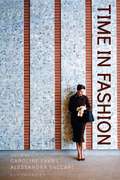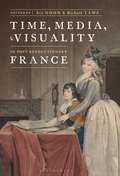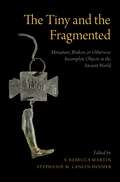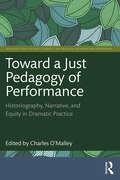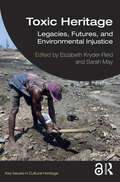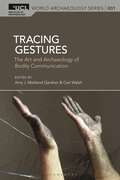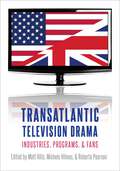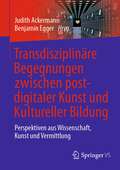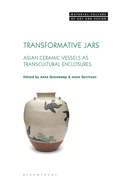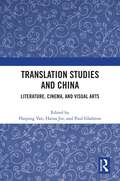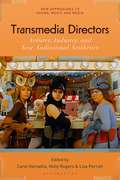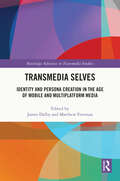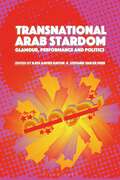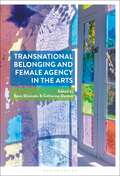- Table View
- List View
Tightrope walker (Large Print)
This is an image of a tightrope walker standing on a rope strung between two towers and holding a long pole, which helps him balance. He is facing to the front so all his limbs are visible. There is a locator dot shown, which will be at the top left of the page when the image is the right way up. In the top centre of the page is the small image (about 5 cm high), of the tightrope walker. He is standing with his arms stretched out, holding his long pole extending to the left and right. His legs are straight and he has his feet on the wire rope, which is stretched between the towers on the left and right of the page. On the left and right of the page are two towers with a safety net, seen from the side, stretched between them. At the bottom of the page is the ground.
Tightrope walker (UEB Contracted)
This is an image of a tightrope walker standing on a rope strung between two towers and holding a long pole, which helps him balance. He is facing to the front so all his limbs are visible. There is a locator dot shown, which will be at the top left of the page when the image is the right way up. In the top centre of the page is the small image (about 5 cm high), of the tightrope walker. He is standing with his arms stretched out, holding his long pole extending to the left and right. His legs are straight and he has his feet on the wire rope, which is stretched between the towers on the left and right of the page. On the left and right of the page are two towers with a safety net, seen from the side, stretched between them. At the bottom of the page is the ground.
Tightrope walker (UEB uncontracted)
This is an image of a tightrope walker standing on a rope strung between two towers and holding a long pole, which helps him balance. He is facing to the front so all his limbs are visible. There is a locator dot shown, which will be at the top left of the page when the image is the right way up. In the top centre of the page is the small image (about 5 cm high), of the tightrope walker. He is standing with his arms stretched out, holding his long pole extending to the left and right. His legs are straight and he has his feet on the wire rope, which is stretched between the towers on the left and right of the page. On the left and right of the page are two towers with a safety net, seen from the side, stretched between them. At the bottom of the page is the ground.
Time in Fashion: Industrial, Antilinear and Uchronic Temporalities
Few phenomena embody the notion of time as well as fashion. Fast-moving and rooted in the 'now', it's constantly creating its own past through the process of rapid style change. Uniquely poised between the past and the future, fashion's relationship with time is unorthodox. Rather than considering time in the conventional sense, this anthology explores three alternative ways to think about fashion and time: the first identifies the seasonal nature of fashion as an industry, and shows how this has impacted on workers and wearers alike. The second looks at fashion design as a ceaseless process of adaptation, reconstruction and recombination of motifs, in which nostalgia and revivals play their part. The third construes fashion's 'imaginary', with its capacity for fantasy and myth-making, as a form of alternate history that asks 'what if?'Within this framework, key classic texts are juxtaposed with lesser known ones, in an interdisciplinary approach that includes philosophy, history, literature, media and fashion design, ranging from the 18th century to the present. It will be of interest to anyone wishing to understand one of the most complex yet inescapable aspects of fashion, its relationship to time, and will be a critical resource for undergraduate and postgraduate students in the humanities and all those interested in fashion in all its creative, commercial and cultural aspects.
Time, Media, and Visuality in Post-Revolutionary France
The radical break with the past heralded by the French Revolution in 1789 has become one of the mythic narratives of our time. Yet in the drawn-out afterlife of the Revolution, and through subsequent periods of Empire, Restoration, and Republic, the question of what such a temporal transformation might involve found complex, often unresolved expression in visual and material culture. This diverse collection of essays draws attention to the eclectic objects and forms of visuality that emerged in France from the beginning of the French Revolution through to the end of the July Monarchy in 1848. It offers a new account of the story of French art's modernity by exploring the work of genre painters and miniaturists, sign-painters and animal artists, landscapists, architects, and printmakers, as they worked out what it meant to be “post-revolutionary.”
The Tiny and the Fragmented: Miniature, Broken, or Otherwise Incomplete Objects in the Ancient World
Miniature and fragmentary objects are both eye-catching and yet easily dismissed. Tiny scale entices users with visions of Lilliputian worlds. The ambiguity of fragments intrigues us, offering tactile reminders of reality's transience. Yet, the standard scholarly approach to such objects has been to see them as secondary, incomplete things, whose principal purpose was to refer to a complete and often life-size whole. The Tiny and the Fragmented offers a series of fresh perspectives on the familiar concepts of the tiny and the fragmented. Written by a prestigious group of internationally-acclaimed scholars, the volume presents a remarkable diversity of case studies that range from Neolithic Europe to pre-Colombian Honduras to the classical Mediterranean and ancient Near East. Each scholar takes a different approach to issues of miniaturization and fragmentation but is united in considering the little and broken things of the past as objects in their own right. Whether a life-size or whole thing is made in a scaled-down form, deliberately broken as part of its use, or only considered successful in the eyes of ancient users if it shows some signs of wear, it challenges our expectations of representation and wholeness, of what it means for a work of art to be "finished" and "affective." Overall, The Tiny and the Fragmented demands a reconsideration of the social and contextual nature of miniaturization, fragmentation, and incompleteness, making the case that it was because of, rather than in spite of, their small or partial state that these objects were valued parts of the personal and social worlds they inhabited.
Tokens in Classical Athens and Beyond (Liverpool Studies in Ancient History)
**An Open Access edition of this book is available on the Liverpool University Press website and the OAPEN library. A selection of essays on symbola, as the tokens of Classical Athens were called, bringing together scholars of various disciplines and professional categories (numismatists, historians, museum curators) that intends to reshape our knowledge on the roles these objects played in the Athenian Democracy. This is a series of case studies which aspires to test old theories and probe new assumptions. The first section explores the extent to which our knowledge has evolved since symbola were first distinguished from coins. Four essays demonstrate how tokens, as material manifestations of particular institutions, contributed to the formation of civic and political identity in the city-state of Athens and the roles they played in ensuring legal and political equality. The second section of the volume on new finds aims to develop expertise in studying tokens and increase relevant knowledge. Finally, a third section contains comparative studies from Sicily, Jerusalem and Ephesos, aiming to adopt a comparative methodology for a better understanding of the characteristics and roles of tokens from across the ancient Mediterranean. Contributors: Vera Geelmuyden Bulgurlu, Tumay Hazinedar Coscun, Antonino Crisà, Yoav Farhi, P. J. Finglass, Mairi Gkikaki, Irini Karra, James Kierstead, John H. Kroll, Stamatoula Makrypodi, Christian Mondello, Daria Russo, Martin Schäfer.
Toward A Just Pedagogy Of Performance: Historiography, Narrative, And Equity In Dramatic Practice (Routledge Series in Equity, Diversity, and Inclusion in Theatre and Performance)
This book is a compendium of resources largely by and for artists and scholars interested in engaging in conversations of justice, diversity, and historiography in the fields of theatre and performance studies. For these students, and for the future instructors in our field who will use this book, we hold a tripartite hope: to expand, to enable, and to provide access. In its whole, we intend for this book to provoke its readers to question the narratives of history that they’ve received (and that they may promulgate) in their artistic and scholarly work. We aim to question methods and ethics of reading present in the western mode of studying drama and performance history. The contributions in the book—not traditional chapters, but manifestos, experiences, articles, conversations, and provocations—raise questions and illuminate gaps, and they do not speak in a unified voice or from a static position. These pieces are written by artists, graduate students, teachers, administrators, and undergraduates; these are expressions of hope and of experience, and not of dogma. This book is aimed toward instructors of undergraduates, both graduate students and faculty at all levels of seniority within theatre and performance studies, as well as at artists and practitioners of the art that wish to find more just ways of viewing history.
Tower Bridge, London (Large Print)
This is an image of Tower Bridge spanning the River Thames. There is a locator dot shown, which will be at the top left of the page when the image is the right way up.In the top centre of the page is the high-level walkway attached to the two towers on the left and right. Down the page from this is the central span of the bridge, shown partially raised: this is split into two sections, which can be raised at an angle to let large ships through. The sections on the left and right of the page are the side-spans which are constructed as two suspension bridges. Running across the bottom of the page is the water of the River Thames.
Tower Bridge, London (UEB Contracted)
This is an image of Tower Bridge spanning the River Thames. There is a locator dot shown, which will be at the top left of the page when the image is the right way up.In the top centre of the page is the high-level walkway attached to the two towers on the left and right. Down the page from this is the central span of the bridge, shown partially raised: this is split into two sections, which can be raised at an angle to let large ships through. The sections on the left and right of the page are the side-spans which are constructed as two suspension bridges. Running across the bottom of the page is the water of the River Thames.
Tower Bridge, London (UEB Uncontracted)
This is an image of Tower Bridge spanning the River Thames. There is a locator dot shown, which will be at the top left of the page when the image is the right way up.In the top centre of the page is the high-level walkway attached to the two towers on the left and right. Down the page from this is the central span of the bridge, shown partially raised: this is split into two sections, which can be raised at an angle to let large ships through. The sections on the left and right of the page are the side-spans which are constructed as two suspension bridges. Running across the bottom of the page is the water of the River Thames.
Toxic Heritage: Legacies, Futures, and Environmental Injustice (Key Issues in Cultural Heritage)
Toxic Heritage addresses the heritage value of contamination and toxic sites and provides the first in-depth examination of toxic heritage as a global issue. Bringing together case studies, visual essays, and substantive chapters written by leading scholars from around the world, the volume provides a critical framing of the globally expanding field of toxic heritage. Authors from a variety of disciplinary perspectives and methodologies examine toxic heritage as both a material phenomenon and a concept. Organized into five thematic sections, the book explores the meaning and significance of toxic heritage, politics, narratives, affected communities, and activist approaches and interventions. It identifies critical issues and highlights areas of emerging research on the intersections of environmental harm with formal and informal memory practices, while also highlighting the resilience, advocacy, and creativity of communities, scholars, and heritage professionals in responding to the current environmental crises. Toxic Heritage is useful and relevant to scholars and students working across a range of disciplines, including heritage studies, environmental science, archaeology, anthropology, and geography.
Tracey Emin: Art into Life
Tracey Emin has undergone an extraordinary metamorphosis from a young, unknown artist into the 'bad girl' of the Young British Art (yBA) movement, challenging the complacency of the art establishment in both her work and her life. Today she is arguably the doyenne of the British art scene and attracts more acclaim than controversy. Her work is known by a wide audience, yet rarely receives the critical attention it deserves.In Tracey Emin: Art Into Life, writers from a range of art historical, artistic and curatorial perspectives examine how Emin's art, life and celebrity status have become inextricably intertwined. This innovative collection explores Emin's intersectional identity, including her Turkish-Cypriot heritage, ageing and sexuality, reflects on her early years as an artist, and debates issues of autobiography, self-presentation and performativity alongside the multi-media exchanges of her work and the tensions between art and craft. With its discussions of the central themes of Emin's art, attention to key works such as My Bed, and accessible theorization of her creative practice, Tracey Emin: Art into Life will interest a broad readership.
Tracing Gestures: The Art and Archaeology of Bodily Communication (UCL World Archaeology Series)
This volume examines the role of gestures in past societies, exploring both how meaning was communicated through bodily actions, and also how archaeologists can trace the symbolism and significance of ancient gestures, ritual practices and bodily techniques through the material remnants of past human groups.Gesture studies is an area of increasing interest within the social sciences, and the individual chapters not only respond to developments in the field, but push it forward by bringing a wide range of perspectives and approaches into dialogue with one another. Each exhibits a critical and reflexive approach to bodily communication and to re-tracing bodies through the archaeological record (in art, the treatment of the body and material culture), and together they demonstrate the diversity of pioneering global research on gestures in archaeology and related disciplines, with contributions from leading researchers in Aegean, Mediterranean, Mesoamerican, Japanese and Near Eastern archaeology. By bringing case studies from each of these different cultures and regions together and drawing on interdisciplinary insights from anthropology, sociology, psychology, linguistics, design, art history and the performing arts, this volume reveals the similarities and differences in gestures as expressed in cultures around the world, and offers new and valuable perspectives on the nature of bodily communication across both space and time.
Transatlantic Television Drama: Industries, Programs, and Fans
In 2014, the UK science-fiction television series Black Mirror was released on Netflix worldwide, quickly becoming a hit with US audiences. Like other beloved British imports, this series piqued Americans' interest with hints of dark comedy, clever plotlines, and six-episode seasons that left audiences frantic for more. In Transatlantic Television Drama, volume editors Michele Hilmes, Matt Hills, and Roberta Pearson team up with leading scholars in TV studies and transnational television to look at how serial dramas like Black Mirror captivate US audiences, and what this reveals about the ways Americans and Brits relate to each other on and off the screen. Focusing on production strategies, performance styles, and audience reception, chapters delve into some of the most widely-discussed programs on the transatlantic circuit, from ongoing series like Game of Thrones, Downton Abbey, Orphan Black, and Sherlock, to those with long histories of transnational circulation like Masterpiece and Doctor Who, to others whose transnational success speaks to the process of exchange, adaptation, and cooperation such as Rome, Parade's End, Broadchurch, and Gracepoint. The book's first section investigates the platforms that support British/American exchange, from distribution partnerships and satellite providers to streaming services. The second section concentrates on the shift in meaning across cultural contexts, such as invocations of heritage, genre shifts in adaptation, performance styles, and, in the case of Episodes, actual dramatized depiction of the process of transatlantic television production. In section three, attention turns to contexts of audience reception, ranging from fan conventions and fiction to television criticism, the effects of national branding on audiences, and the role of social media in de- or re-contextualizing fans' response to transnational programs.
Transdisziplinäre Begegnungen zwischen postdigitaler Kunst und Kultureller Bildung: Perspektiven aus Wissenschaft, Kunst und Vermittlung
Postdigitale Kunstpraktiken bergen große Potenziale für die Kulturelle Bildung, da sie kreative Aneignungsformen im Kontext digitaler Technologien hervorbringen, neue Rezeptionserfahrungen kreieren und eine kritisch informierte Betrachtung von Digitalisierungsprozessen befördern. Dennoch sind sie bislang wenig erforscht und nehmen nur vereinzelt Eingang in Bildung und Vermittlung. Der Sammelband kombiniert theoretische Betrachtungen postdigitaler Kunst mit Projektberichten aus der Praxis, um Leser*innen die Möglichkeit zu geben, das Feld besser zu verstehen und Anwendungsideen für die eigenen Tätigkeitsbereiche zu entwickeln.
Transformative Jars: Asian Ceramic Vessels as Transcultural Enclosures (Material Culture of Art and Design)
The term 'jar' refers to any man-made shape with the capacity to enclose something. Few objects are as universal and multi-functional as a jar – regardless of whether they contain food or drink, matter or a void, life-giving medicine or the ashes of the deceased. As ubiquitous as they may seem, such containers, storage vessels and urns are, as this book demonstrates, highly significant cultural and historical artefacts that mediate between content and environment, exterior worlds and interior enclosures, local and global, this-worldly and otherworldly realms. The contributors to this volume understand jars not only as household utensils or evidence of human civilizations, but also as artefacts in their own right. Asian jars are culturally and aesthetically defined crafted goods and as objects charged with spiritual meanings and ritual significance. Transformative Jars situates Asian jars in a global context and focuses on relationships between the filling, emptying and re-filling of jars with a variety of contents and meanings through time and throughout space. Transformative Jars brings together an interdisciplinary team of scholars with backgrounds in curating, art history and anthropology to offer perspectives that go beyond archaeological approaches with detailed analyses of a broad range of objects. By looking at jars as things in the hands of makers, users and collectors, this book presents these objects as agents of change in cultures of craftsmanship and consumption.
Translation Studies and China: Literature, Cinema, and Visual Arts
Focusing on transculturality, this edited volume explores how the role of translation and the idea of (un)translatability in the transformative complementation of different civilizations facilitates the transcultural connection between Chinese and other cultures in the modern era. Bringing together established international scholars and emerging new voices, this collection explores the linguistic, social, and cultural implications of translation and transculturality. The 13 chapters not only discuss the translation of literature, but also break new ground by addressing the translation of cinema, performance, and the visual arts, which are active bearers of modern and contemporary culture that are often neglected by academics. Through an engagement with these diverse fields, the title aims not only to reflect on how translation has reproduced values, concepts, and cultural forms, but also to stimulate the emergence of new possibilities in the dynamic transcultural interplay between China and the diverse national, cultural-linguistic, and contexts of Europe, the Americas, and Asia. It shows how cultures have been appropriated, misunderstood, transformed, and reconstructed through processes of linguistic mediation, as well as how knowledge, understanding, and connections have been generated through transculturality. The book will be a must read for scholars and students of translation studies, transcultural studies, and Chinese studies.
Transmedia Directors: Artistry, Industry and New Audiovisual Aesthetics (New Approaches to Sound, Music, and Media)
Transmedia Directors focuses on artist-practitioners who work across media, platforms and disciplines, including film, television, music video, commercials and the internet. Working in the age of media convergence, today's em/impresarios project a distinctive style that points toward a new contemporary aesthetics. The media they engage with enrich their practices – through film and television (with its potential for world-building and sense of the past and future), music video (with its audiovisual aesthetics and rhythm), commercials (with their ability to project a message quickly) and the internet (with its refreshed concepts of audience and participation), to larger forms like restaurants and amusement parks (with their materiality alongside today's digital aesthetics). These directors encourage us to reassess concepts of authorship, assemblage, transmedia, audiovisual aesthetics and world-building. Providing a vital resource for scholars and practitioners, this collection weaves together insights about artist-practitioners' collaborative processes as well as strategies for composition, representation, subversion and resistance.
Transmedia Selves: Identity and Persona Creation in the Age of Mobile and Multiplatform Media (Routledge Advances in Transmedia Studies)
This book examines the mediated shift in the contemporary human condition, focusing on the ways in which we synthesise with media content in daily life, essentially transmediating ourselves into new forms and (re)creating ourselves across media. Across an international roster of essays, this book establishes a transdisciplinary theory for the ‘transmedia self’, exploring how technological ubiquity and digital self-determination combine with themes and disciplines such as celebrity culture, fandom, play, politics, and ultimately broader self-conception and projection to inform the creation of transmedia identities in the twenty-first century. Specifically, the book repositions transmediality as key to understanding the formation of identity in a post-digital media culture and transmedia age, where our lives are interlaced, intermingled, and narrativised across a range of media platforms and interfaces. This book is ideal for scholars and students interested in transmedia storytelling, cultural studies, media studies, sociology, philosophy, and politics.
Transnational Arab Stardom: Glamour, Performance and Politics
Building on the work of star studies scholars, this collection provides contextual analyses of off-screen representation, as well as close textual analyses of films and star personas, thereby offering an in-depth study of the Arab star as text and context of Arab cinema. Using the tools of audience reception studies, the collection will also look at how stars (of film, stage, screen and new media) are viewed and received in different cultural contexts, both within and outside of the Arabic-speaking world.Arab cinema is often discussed in terms of political representation and independent art film, but rarely in terms of stardom, glamour, performance or masquerade. Aside from a few individual studies on female stardom or aspects of Arab masculinity, no major English-language study on Arab stardom exists, and collections on transnational stars or world cinema also often neglect to include Arab performers. This new book seeks to address this gap by providing the first study dedicated entirely to stardom on the Arab screen.Structured chronologically and thematically, this collection highlights and explores Arab film, screen and music stars through a transnational and interdisciplinary set of contributions that draw on feminist, performance and film theories, media studies, sound studies, material culture, queer star and celebrity studies, and social media studies.
Transnational Belonging and Female Agency in the Arts
Transnational Belonging and Female Agency in the Arts interrogates the politics of space expressed via womxn's artistic practices, which prioritise solidarity and collaboration across borders, imagining attentive geographies of difference. It considers belonging as a manifestation of processes of becoming that traverse borders and generate new spaces and forms of difference. In doing so, the book aims to catalyse mutual social relations founded upon responsibility and response-ability to each other. The transnational framework activates concerns around belonging at a time of intensified divisions, partitioning global narratives, unequal trajectories and increasing violence against bodies of the most vulnerable, largely founded on Eurocentric paradigms of political, economic and cultural superiority. The contributors engage in a conversation signalling transversal thinking and artmaking in order to articulate and activate 'in-between' spaces. This is to welcome co-affective models of belonging that question versatile embodiments of subjectivity as both agentic and as interrelational. Organised around the triangulation of modes of belonging: spatial, affective and collective, overarched by a transnational lens that acknowledges non-hierarchical, local and socially relevant genealogies against universalising politics of globalisation, these essays consider afresh ways in which female agency disrupts borders and activates concerns around different forms of belonging, citizenship and transnationalisms.Cover Image credit: Keren Anavy, Garden of Living Images (2018), general installation view (detail). Courtesy of the artist and Wave Hill. Photographer: Stefan Hagen
Trapeze act (Large Print)
This page shows two trapeze artists performing their act. They are seen from the side so each of them has only one arm and leg visible. Also on the page, there are two supporting towers, two trapezes and a safety net. The scene has a dashed line image border. There is a locator dot shown, which will be at the top left of the page when the image is the right way up. At the top of the page the ropes of the two trapezes can be found hanging. They are attached to points above, which cannot be found as they are outside the image border. In the centre of the page are the two small images of the performers. The one to the left hangs upside down with his legs hooked over the trapeze with his head to the right and his arm down the page. The performer to the right is flying horizontally through the air with his arm to the left, his hand ready to grasp the hand of the other artist. To the right of his arm are his head, chest and leg. His lower leg and foot point up the page. On the left and right of the page are two towers with a safety net, seen from the side, stretched between them. At the bottom of the page is the ground.
Trapeze act (UEB Contracted)
This page shows two trapeze artists performing their act. They are seen from the side so each of them has only one arm and leg visible. Also on the page, there are two supporting towers, two trapezes and a safety net. The scene has a dashed line image border. There is a locator dot shown, which will be at the top left of the page when the image is the right way up. At the top of the page the ropes of the two trapezes can be found hanging. They are attached to points above, which cannot be found as they are outside the image border. In the centre of the page are the two small images of the performers. The one to the left hangs upside down with his legs hooked over the trapeze with his head to the right and his arm down the page. The performer to the right is flying horizontally through the air with his arm to the left, his hand ready to grasp the hand of the other artist. To the right of his arm are his head, chest and leg. His lower leg and foot point up the page. On the left and right of the page are two towers with a safety net, seen from the side, stretched between them. At the bottom of the page is the ground.
Trapeze act (UEB uncontracted)
This page shows two trapeze artists performing their act. They are seen from the side so each of them has only one arm and leg visible. Also on the page, there are two supporting towers, two trapezes and a safety net. The scene has a dashed line image border. There is a locator dot shown, which will be at the top left of the page when the image is the right way up. At the top of the page the ropes of the two trapezes can be found hanging. They are attached to points above, which cannot be found as they are outside the image border. In the centre of the page are the two small images of the performers. The one to the left hangs upside down with his legs hooked over the trapeze with his head to the right and his arm down the page. The performer to the right is flying horizontally through the air with his arm to the left, his hand ready to grasp the hand of the other artist. To the right of his arm are his head, chest and leg. His lower leg and foot point up the page. On the left and right of the page are two towers with a safety net, seen from the side, stretched between them. At the bottom of the page is the ground.

